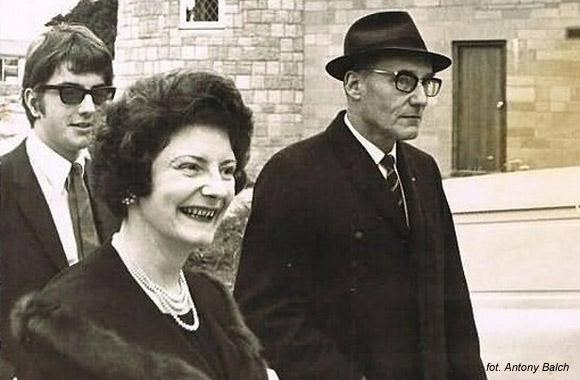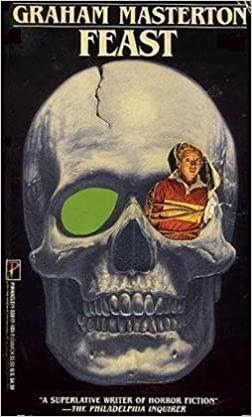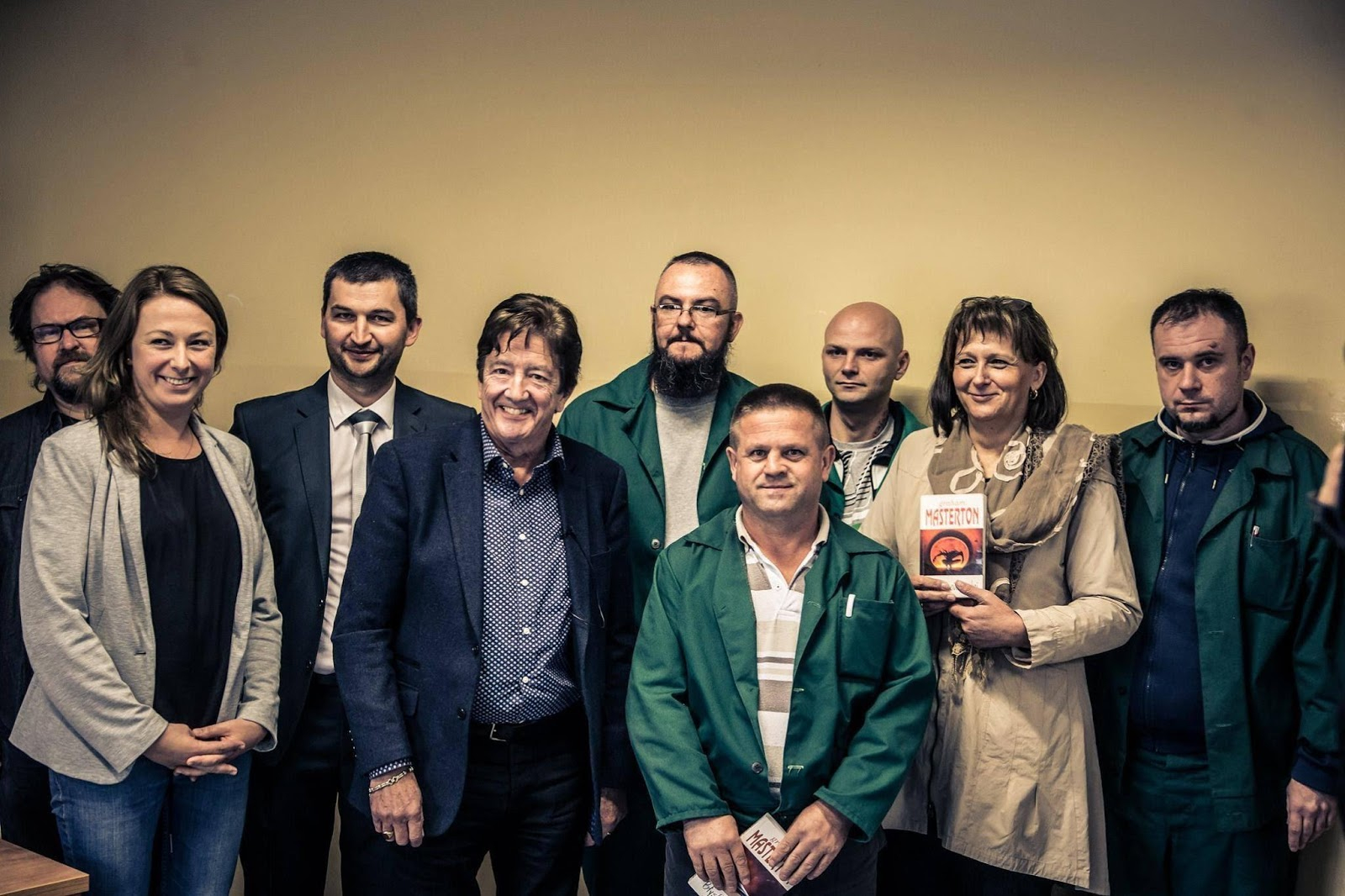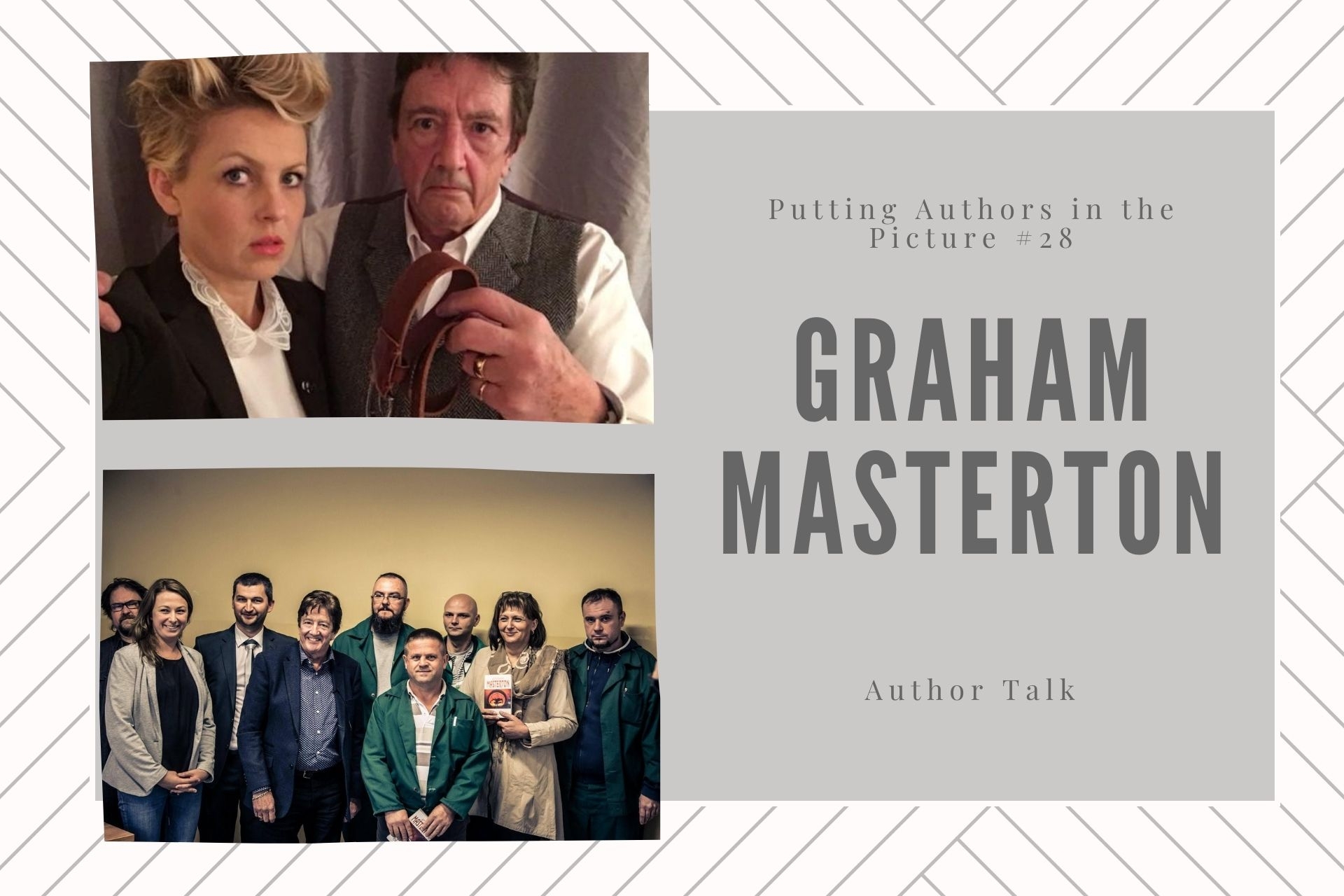 Graham Masterton has written over a hundred books crossing a range of genres since his debut horror novel The Manitou in 1976. His books have become best-sellers, been adapted for film and TV series, and he has won a number of awards. If you want to know more about his work then find yourself a copy of Manitou Man: The Worlds of Graham Masterton by Matt Williams and Ray Clark, which is described by Stephen Laws in the introduction on Graham Masterton’s Official Site as: "a definitive analysis of one of the top ‘horror’ names”. There are a number of awards in his name, including one that Graham set up and tells us about below. In 2019 he was given a Lifetime Achievement Award by the Horror Writers’ Association.
Graham Masterton has written over a hundred books crossing a range of genres since his debut horror novel The Manitou in 1976. His books have become best-sellers, been adapted for film and TV series, and he has won a number of awards. If you want to know more about his work then find yourself a copy of Manitou Man: The Worlds of Graham Masterton by Matt Williams and Ray Clark, which is described by Stephen Laws in the introduction on Graham Masterton’s Official Site as: "a definitive analysis of one of the top ‘horror’ names”. There are a number of awards in his name, including one that Graham set up and tells us about below. In 2019 he was given a Lifetime Achievement Award by the Horror Writers’ Association.
Chuffed to pieces is the polite way to describe my excitement on introducing our February Author in the Picture. Graham Masterton’s latest novel, The Children That God Forgot is a cracking read and a LoveReading Star Book, crossing genres including crime, it would be placed in horror on most bookshelves. Personally I love horror when I can believe it, when goosebumps skitter-scatter down my arms and my mind begins to play tricks on me. I state in my review: “it feels so real you could almost reach out and touch it...There is a fine balance on hand, plenty of blood and guts yes, there is also fabulous writing, smirky humour, and thought-provoking themes waiting to be found.” We would like to offer a warm welcome to Graham, he has chosen some fabulous photos, I think my favourite is the one that sums up his proudest achievement as an author.
The photo that sums up my author journey.

Here I am in my Mod suit and shades in 1966 visiting Saint Hill, the Scientology Centre in East Sussex, with the author William Burroughs. The lady with the pearls and the lovely teeth is a Scientology secretary who is showing us around. I was the deputy editor of the men’s magazine Mayfair at the time. I had befriended William after reading his notorious novel The Naked Lunch, which had impressed me deeply with its explicit language and its ground-breaking use of grammar and its general fearlessness. I had written to him when he was living in Tangiers and we had exchanged numerous letters and postcards. By the time I started working for Mayfair, William had come to live in Duke Street, in central London, and we were able to meet regularly and talk about writing. We discussed writing technique for hours, especially how to deconstruct language and then put it back together again to give it a variety of different meanings and nuances. We wrote a novella together Rules of Duel which lay in my desk drawer for decades until it was eventually published in 2002 by Telos Books. I commissioned William to write a series of articles for Mayfair, The Burroughs Academy, in which I gave him free rein to discuss any subject he chose, such as government oppression or censorship. He became interested in Scientology, hence this visit…actually under the assumed name of ‘Graham Thomas’ and ‘William Lee’. I later wrote two novels in a Burroughs-like style, neither of which I submitted for publication, but they gave me the practise that I needed to write full-length novels with believable characters. The most important lesson I learned from William was that an author should be invisible – El Hombre Invisible, he called it – and that he or she should conjure up sounds and smells and other evocative sensations to make readers feel that they were actually living the story rather than reading it on a page. ‘Hear the boat whistling in the harbour,’ he used to say. ‘Feel the wind blowing on the back of your neck.’
My favourite book cover.

FEAST is the story of a restaurant critic who comes across a religious sect called the Celestines who devote themselves to the Lord by cooking and eating themselves. His young son is kidnapped by this sect and he has to join it to rescue him. Probably the most memorable scene is when he has to cut off his own finger, fry it and eat it. (In the UK, this novel was published under the title RITUAL.) The US cover is embossed and die-cut and when you open it, you find that a number of children are being cooked in a pot. It is very ‘80s (the book was published in 1988) but I love it because it is so tactile and so over the top. This cover and a review of the novel appear in Grady Hendrix’s collection of horror novel book covers from the 1970s and 1980s, PAPERBACKS FROM HELL. His verdict: ‘Wherever you think this book won’t go, Masterton not only goes there, he reports back in lunacy-inducing detail. By the last page we’ve seen amputee dwarf assassins, flaming dogs, one of the most harrowing scenes of self-cannibalism ever committed to paper, one death by explosive vomiting and an appearance by Jesus Christ himself.’ FEAST/RITUAL is available as an e-book on Amazon Kindle, but sadly, the only copy that I have seen on sale with this cover is on Amazon USA for $135.00.
My most memorable book event

A motley collection of horror authors at a signing session for the Dark Voices anthology at the Forbidden Planet bookshop in 1990. That’s Clive Barker top left, me in the centre of the back row, Steve Jones second from top right, and James Herbert centre front row. When we were signing books we all sat in a line at a long table. Clive was sitting on my right and Jim on my left. When Clive passed me a book to autograph, I wrote in it ‘I love you, Jim, from Clive.’ When I passed it to Jim and he read it, you should have seen the look he gave Clive. Those were the days!
A location that inspired me.

Cork City, in the Republic of Ireland, where my late wife Wiescka and I lived for a few years. It is one of the friendliest and nuttiest cities you could ever hope to live in. In Dublin they speak what they consider to be the best English in the world. When we came to Cork it took us at least six months to understand what anybody was saying to us, not only because of the accent but because of the slang. Every sentence has to have at least one ‘like’ in it, do you know what I mean, like? If somebody says ‘be doggy wide’ that means you need to be alert. If something is ‘the berries’ it’s very good…and it’s also very good if it’s ‘massive.’ Then there’s ‘the gawks’, feeling sick, as in ‘that breast in a bun gave me the gawks.’ Shopping is ‘the messages’, which can be confusing. If you’re drunk you’re ‘langers’ although ‘langer’ is a rude description of a man to whom you’re ‘allergic.’ Cork has the second-deepest harbour in the world so over the centuries it attracted many visitors, both welcome and unwelcome, such as Vikings and Sir Francis Drake. The language still has phrases in it that hark back to mediaeval days, such as ‘take a sconce at that’ meaning ‘take a look.’ In the picture you can see St Anne’s Church, Shandon, which has a clock on each of its four faces. In Cork they call it ‘The Four-Faced Liar’ because the clocks don’t always tell exactly the same time. When I realised that very few novels had been set in Cork, I was inspired to write the series of crime thrillers featuring Det Supt Katie Maguire, starting with White Bones and finishing eleven books later with The Last Drop of Blood…although I haven’t killed Katie off and I shall be back in Cork when the pandemic allows.
A booky photo that makes me smile

After the publication of her first supernatural thriller Diviner, the author and charity worker Dawn G Harris thought about writing short horror stories together. We have been close friends for many years and when it comes to writing, our minds think remarkably alike. In fact I have never been able to co-author any novels or stories with any other writers apart from William Burroughs and Dawn. At the time we wrote our first short story, Stranglehold, Dawn was managing a charity shop for cancer research, and she suggested that we should write a tale that was based on the donations that people make to such shops, such as the clothes of their recently-deceased relatives. One item that came to mind was a leather belt that seemed to have a wicked life of its own, which is why we took this picture to promote it. Stranglehold was sold in the USA to Cemetery Dance magazine, and also in Poland, Bulgaria, Russia, France and Greece, where it was the title story for an anthology of horror stories. After Stranglehold we wrote Cutting The Mustard, about a librarian whose computer holds a gruesome secret. That appeared in The Horror Zine’s Book of Ghost Stories in the US, which has been shortlisted for a Bram Stoker Award, as well as Okolica Strachu magazine in Poland, and again in Bulgaria and Russia and Greece, where it featured in a charity anthology for children with cancer, Who Has The Power. Dawn and I are now working on a third horror story, although we don’t rush it because we are both writing novels at the same time. I am sure that we will be able to come up with another picture for our new story that makes us smile.
A picture that sums up my proudest achievement as an author

Here I am with inmates and staff from Wołow maximum security prison near Wrocław in southern Poland. I visited this prison on a promotional tour six years ago, and when I was there I realised how interested the prisoners were in reading and books (of course they have plenty of spare time!) After I had given a talk to about 100 prisoners I had lunch with the director of the prison Robert Kuczera and I suggested to him that we might hold a short story contest for the inmates. It would give them a chance to be creative but also to express their feelings to the world outside their cells. Robert is very keen on rehabilitation and so with his help and the backing of the Wrocław Agglomeration, which is an organisation set up to promote culture and sport in Lower Silesia, we started the Graham Masterton Written In Prison Award (Nagroda Grahama Mastertona ‘W Więzniu Pisane”). The contest has been running for five years now and inmates from all of Poland’s prisons take part. Each year we have had well over 100 entries and the standard of writing has been really impressive. The best 20 stories are selected by the writer Joanna Opiat-Bojarska and translated by Kataryzna Janusik, and then I pick the 10 best. Some of the stories have been fantasies or thrillers, although many of them are thinly-disguised and heartbreaking accounts of the mistakes that the prisoners have made in their lives, and how they have come to end up in jail. The contest is supported by the Polish Prison Service and the ten winners receive DVD players, as well as certificates, and I write personally to every entrant and give them a souvenir pen. For me, this is one of the most satisfying and helpful things that I have been able to do as a writer. Although the pandemic meant that I was unable to visit Wołow this year and present the prizes in person, I am confident that the contest will continue into its sixth year and benefit those prisoners who enter.
Keep up to date with Graham Masterton
Website: www.grahammasterton.co.uk
Twitter:@GrahamMasterton
Instagram: @grahammasterton
If you enjoyed this, check out more titles by Graham Masterton. You can also visit the Author Talk section of our blog to find more Author Q&As and 'Putting Authors in the Picture' features.
Recent Putting Authors in the Picture include:
#27 - Stuart MacBride
#26 - Joanne Harris
#25 - Bridget Collins
#24 - Chris Hammer
#23 - Michael Robotham
#22 - Carole Matthews
#21 - Jennifer Hillier



Comments (0)
Leave A Reply
You must be logged in to post a comment.